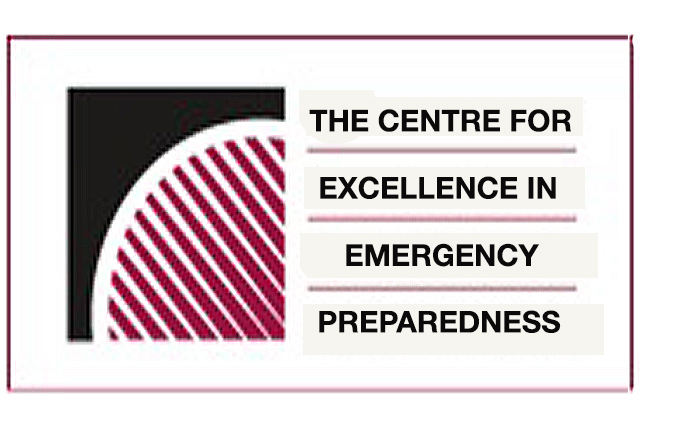
Welcome to the CEEP Journal Club!
Many of you have used the resource library at www.ceep.ca. Now here is a new offering from CEEP! We search the health care disaster literature for you, select the articles, review them and present them with a critique and an expert opinion. Subscribe and get the most recent research delivered to your inbox.
Episodes

Thursday Feb 17, 2022
Thursday Feb 17, 2022
Should you plan on using drones at your next mass gathering or MCI? The answer is an unequivocal yes. Dr. Jain joins us to discuss his article: Comparison of Unmanned Aerial Vehicle Technology versus Standard Practice of Scene Assessment by Paramedic Students of a Mass-Gathering Event
Background information on drone use and regulation is presented. Two other articles on injuries caused by drones are also reviewed.

Thursday Jan 13, 2022
Thursday Jan 13, 2022
This Centre for Excellence in Emergency Preparedness journal club discusses preparing for an active shooter in your hospital.
Article reviewed: Argintaru N, Li W, Hicks C, White K, McGowan M, Gray S, Petrosoniak A. An active shooter in your hospital: a novel method to develop a response policy using in situ simulation and video framework analysis. Disaster medicine and public health preparedness. 2021 Apr;15(2):223-31.
AbstractHospital shootings (Code Silver) are events that pose extreme risk to staff, patients, and visitors. Hospitals are faced with unique challenges to train staff and develop protocols to manage these high-risk events. In situ simulation is an innovative technique that can evaluate institutional responses to emergent situations. This study highlights the design of an active shooter in situ simulation conducted at a Canadian level-1 trauma center to test a Code Silver active shooter protocol response. We further apply a modified framework analysis to extract latent safety threats (LSTs) from the simulation using ethnographic observation of the response by law enforcement, hospital security, logistics, and medical personnel.The video-based framework analysis identified 110 LSTs, which were assigned hazard scores, highlighting 3 high-risk LSTs that did not have effective control measures or were not easily discoverable. These included lack of security during patient transport, inadequate situational awareness outside the clinical area, and poor coordination of critical tasks among interprofessional team members. In situ simulation is a novel approach to support the design and implementation of similar events at other institutions. Findings from ethnographic observations and a video-based analysis form a structured framework to address safety, logistical, and medical response considerations.Keywords: active shooter; patient safety; simulation; training

Thursday Jan 13, 2022
Thursday Jan 13, 2022
Article reviewed: Farcas AM, Zaidi HQ, Wleklinski NP, Tataris KL. Implementing a Patient Tracking System in a Large EMS System. Prehospital Emergency Care. 2021 Feb 4:1-9.
AbstractObjectiveAccurate tracking of patients poses a significant challenge to prehospital and hospital emergency medical providers in planned and unplanned events. Previous reports on patient tracking systems are limited primarily to descriptive reports of post incident reviews or simulated exercises. Our objective is to report our experience with implementing a patient barcode tracking system during various planned events within a large urban EMS system.MethodsIn 2018, representatives from the Chicago Department of Public Health, Chicago Fire Department EMS, private EMS agencies, and 27 hospitals in the Chicago EMS System were trained on the use of a web-based patient tracking system using barcoded triage tags and wristbands to monitor triage category and hospital destination during an event. The tracking system was used on two planned operational days and three pre-planned mass gathering events. The primary outcome was the percent of patients initially scanned by EMS that were scanned by the hospital. Descriptive statistics were collected. Barriers to patient tracking system use were identified.ResultsEach event was reviewed for the number of patients assigned a barcode identifier and scanned by EMS that were then scanned by the hospital. In the first planned operational day, 57% (359/622) of patients initially scanned by EMS were scanned by the hospital. In the second planned operational day, 88% (355/402) of EMS scanned patients were scanned by the hospital and 37% (133/355) were assigned a final disposition. At three city mass gathering events, there were 79% (50/63), 95% (190/199), and 82% (46/56) of EMS scanned patients also scanned by hospitals. Logistical and technological challenges were documented.ConclusionsUse of a web-based system with barcode identifiers successfully tracked patients from prehospital to hospital during planned operational days and mass gathering events. Percent of scanned patients increased after the first operational day and remained consistent in subsequent events. Limitations to the patient tracking system included logistical and technological barriers. Similar patient tracking systems may be implemented to assist with event management in other EMS systems.Key words: EMS; patient tracking system; mass gathering event; prehospital; barcode

Thursday Jan 13, 2022
Thursday Jan 13, 2022
This episode describes the latest research on when, where and how to apply pre-hospital tourniquets as well as guidelines on removal in hospital.
Articles reviewed:Levy MJ, Pasley J, Remick KN, Eastman AL, Margolis AM, Tang N, Goolsby CA. Removal of the Prehospital Tourniquet in the Emergency Department. The Journal of Emergency Medicine. 2021 Jan 1;60(1):98-102.Henry R, Matsushima K, Ghafil C, Henry RN, Theeuwen H, Golden AC, Abramson TM, Inaba K. Increased Use of Prehospital Tourniquet and Patient Survival: Los Angeles Countywide Study. Journal of the American College of Surgeons. 2021 Apr 22.Wyckoff MH, et al. 2021 International Consensus on Cardiopulmonary Resuscitation and Emergency Cardiovascular Care Science With Treatment Recommendations. Resuscitation. 2021 Nov 11:S0300-9572(21)00448-2. doi: 10.1016/j.resuscitation.2021.10.040. Gattere M, Scaffei N, Gozzetti L, Alessandrini M. Tourniquet Use on a Pediatric Patient. Journal of Special Operations Medicine: a Peer Reviewed Journal for SOF Medical Professionals. 2021 Jan 1;21(1):120-3.

